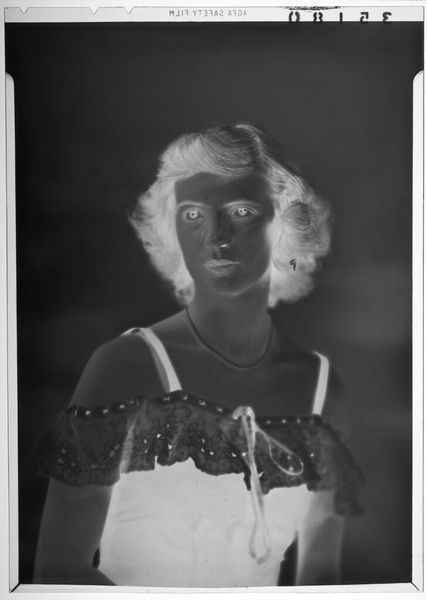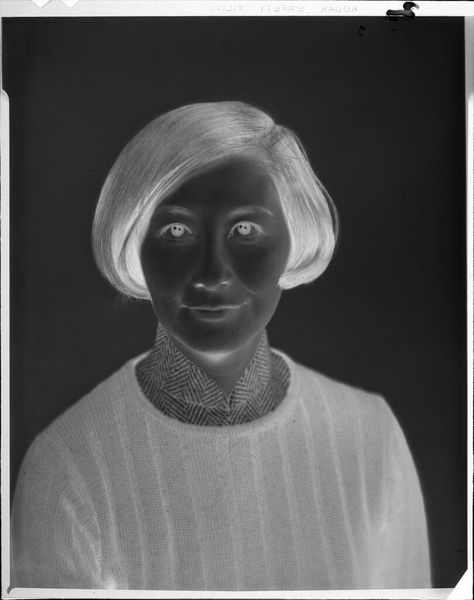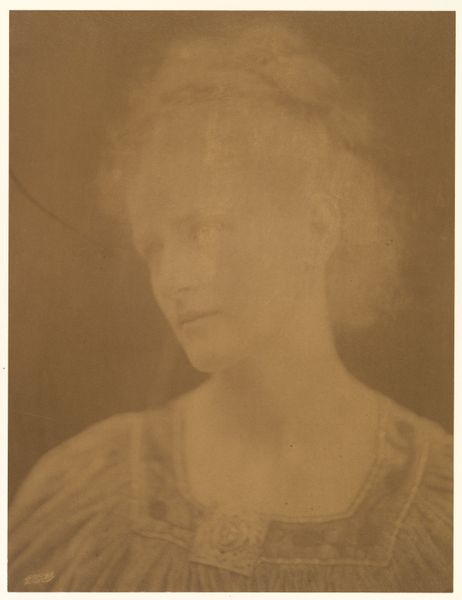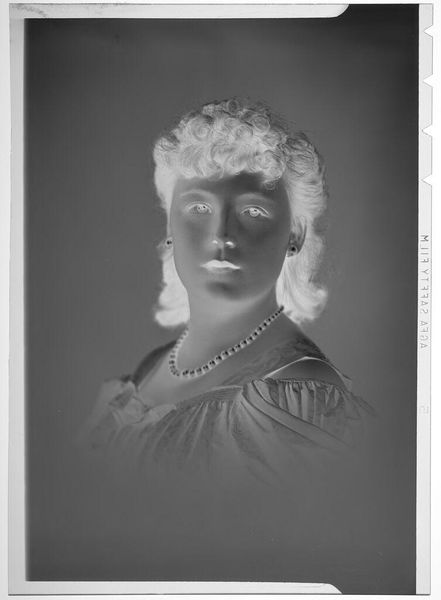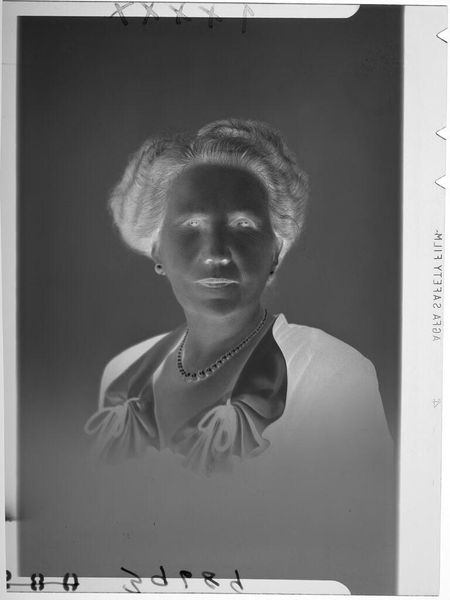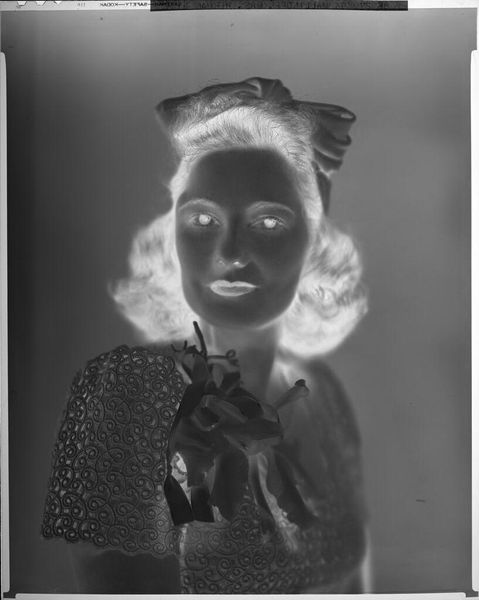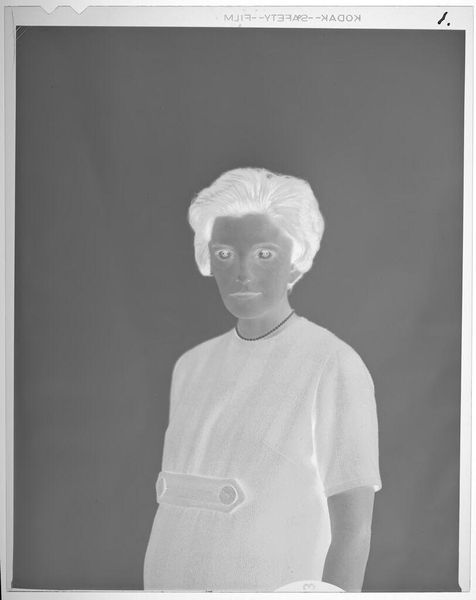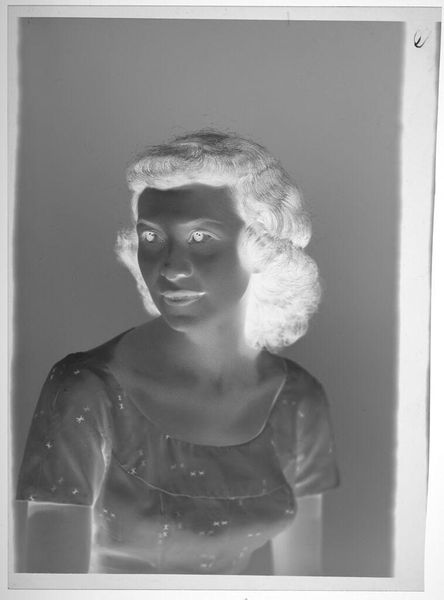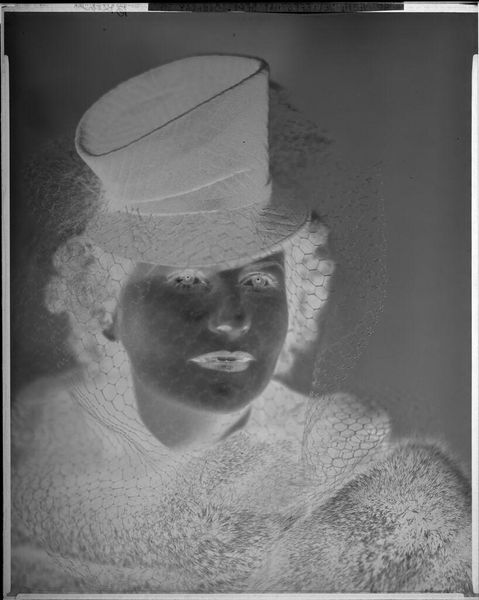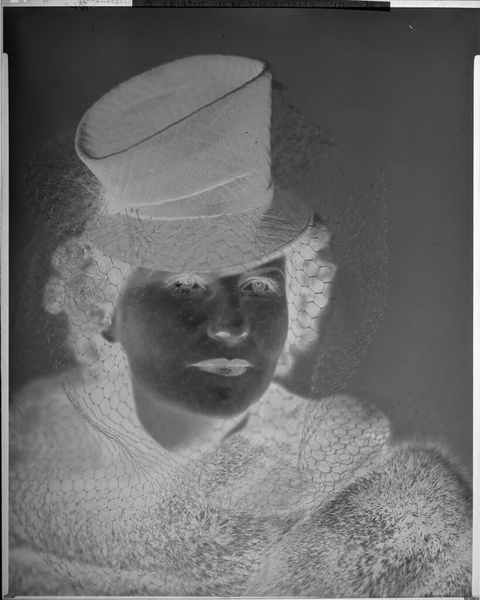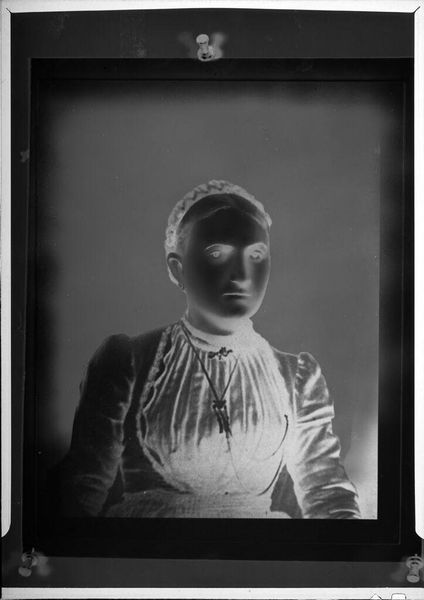
paper, photography, gelatin-silver-print
#
portrait
#
17_20th-century
#
woman
#
paper
#
photography
#
gelatin-silver-print
#
modernism
Copyright: Public Domain
Curator: Here we have Hugo Erfurth’s “Untitled (Ms. Schürmann, Negative),” likely created shortly after 1925. The artwork, held here at the Städel Museum, presents an intriguing, almost ghostly presence. What are your immediate thoughts on encountering this work? Editor: Well, the negative format certainly jumps out. It gives the piece a very stark, almost unsettling feel. The figure emerges from a sea of darkness, creating a dramatic contrast. The inversion definitely changes how we perceive the subject. Curator: Absolutely. Considering it's a gelatin silver print on paper, it compels us to consider Erfurth's material choices. The decision to present a negative challenges our conventional notions of portraiture. I wonder about the darkroom processes, the artist's precise manipulation of light. It speaks volumes about the labor and the choices in photographic printing as artistic expression during this period. Editor: Indeed. Presenting it as a negative throws the role of the photographer into sharp relief. Was this intended as the final presentation or a stage in a more involved production? It raises questions about the nature of representation itself. This was also a time when photography was vying for legitimacy in the art world; choices like this surely were a part of that conversation. Curator: The historical context is important. During the rise of Modernism, artists across media experimented with redefining form and pushing artistic boundaries. The photographic negative becomes less about representing reality and more about exploring artistic process, intervening directly with the tools and chemistry of the medium. What narratives about women were possible through such novel portraiture? Editor: Right, this portrait prompts me to think about Erfurth’s position within the German art scene of the time and the social and political factors impacting its reception. It highlights the politics of the image itself. The negative subverts expectation and creates a space for different readings. Curator: Looking closer, I keep circling back to the material presence of that gelatin silver. It's not merely a representational tool, but an active ingredient. It brings a depth and character all its own. The way the highlights glow with that material depth is simply undeniable. Editor: This work offers an opportunity to discuss photography as a powerful form of public representation. Thinking about the work in this way makes me eager to consider it more deeply within art history. Curator: And for me, that leads right back to appreciating the active hand of the artist, embedded within the final form. It's this very tension, perhaps, that makes the work so rewarding.
Comments
stadelmuseum about 2 years ago
⋮
Like the art photographers at the turn of the century, Hugo Erfurth relied on the painterly effect of soft focus. Flowing contours and soft colour gradients in the positive consciously make use of stylistic devices of pictorialism, at the same time he positions his model before a monochrome background and shows a reduced detail as is characteristic of representations in the style of Neue Sachlichkeit. In the negative the values of dark and light are inverted and the work seems abstract and evokes surrealism: the eyes of the sitter stare demonically at the onlooker, while the rest of her face is obscured by darkness.
Join the conversation
Join millions of artists and users on Artera today and experience the ultimate creative platform.
